#easter rising
Text
presented without comment.

#james connolly#coronation#king charles iii#irish#irish nationalism#socialism#marxism#irish republicanism#anti-monarchy#1916 rising#easter rising#irish republic
138 notes
·
View notes
Text
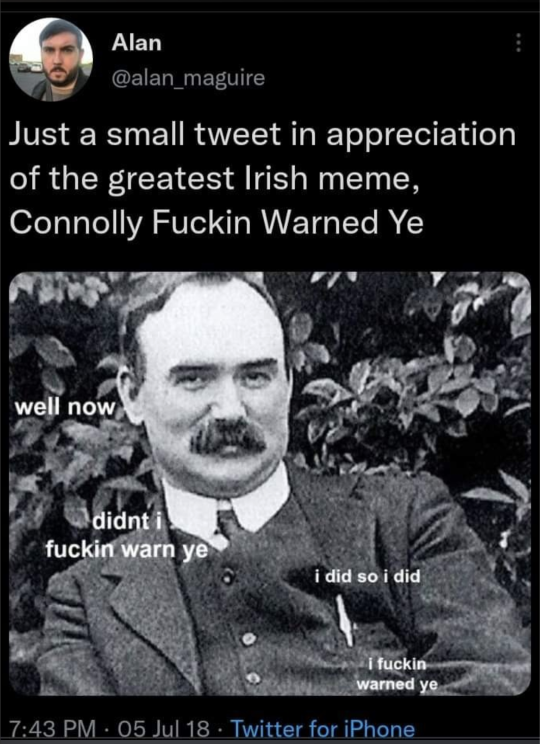
21 notes
·
View notes
Text

Handsome I am, a red-blooded man
Stand for what’s right, or as oft as I can
Stripped of my honours, though no crimes were mine
Now a name to forget with the passing of time. . .
Black Diaries
Digital
2023
11 notes
·
View notes
Text

Solid candidate for the funniest picture I have ever seen
#8 years old with a gun...☝️ this is like the twentieth (?) century equivalent of that story abt henry grattan and the corpses#20th century#easter rising#jory.txt
13 notes
·
View notes
Text
Recap of the Irish War of Independence
One cannot talk about or understand the Irish Civil War without understanding the Irish War of Independence. In fact, I’ve seen more and more historians argue that we can think of the Irish War of Independence and the Irish Civil War as one big civil war, since the Royal Irish Constabulary, the IRA’s main enemy before the Black and Tans arrived, were Irish themselves and IRA intimidated, harassed, and executed Irish people who they considered “informers and traitors.” Additionally, many of the hopes, dreams, and aspirations initiated by the women’s liberation moment of 1912, the Lockout of 1913, and Easter Rising were further refined by the Irish War of Independence, and contributed to the violent schism in Irish Society following the signing of the Anglo-Irish Treaty. These aspirations and goals would further be redefined by the Irish Civil War with participants of all sides feeling like they lost more than they gained from the entire affair.
Thus, why I feel it’s important to recap the major events of the Irish War of Independence
Leading Up to the Irish War of Independence
Ireland has always been a place of debate, uprisings, and desire for change, but in the early 1900s there were three movements that paved the way for the Irish War of Independence: the Suffragette Movement of 1912, the Gaelic Revival, the 1913 Lockout, the Home Rule Campaign and Easter Rising. I’ve discussed all four movements in great detail in the first season, but in summary, the Suffragette Movement, the Gaelic Revival, and the 1913 Lockout created an environment of mass organizing and brought together many activists and future revolutionaries. The Home Rule Campaign, combined with WWI, created the conditions for a violent uprising.
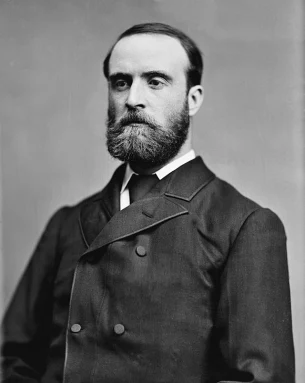
Charles Parnell
[Image description: A black and white photo of a white man with a high forehead and a thick, round beard. He is wearing a white button down and black tie and a grey double breast jacket.]
British Prime Minister Gladstone introduced the concept of Home Rule in 1880, with support from one of Ireland’s most famous statesmen: Charles Parnell. The entire purpose of Home Rule was to grant Ireland its own Parliament with seats available to both the Catholic majority and the Protestant minority and current power brokers). However, Parnell destroyed support for Home Rule by being involved in a messy and scandalous divorce and the Irish Republican Brotherhood (IRB), the precursor to the Irish Republican Army (IRA), scared the British government with their terrorist attacks. Home Role went through another failed iteration, but John Redmond was confident he would get the third iteration passed. This newest iteration was introduced to Parliament in 1914 and have created a bicameral Irish Parliament in Dublin, abolished Dublin Castle (the center of British power in Ireland), and continued to allow a portion of Irish MPs to sit in Parliament. It was supported by many nationalists in Ireland, barely tolerated by the Asquith Administration, and despised by the Unionists.
The Unionists believed they had a reason to worry. They had not forgotten the Protestants slaughtered during the 1798 Uprising nor the power they lost through the machinations of O’Connell and Parnell. Facing a massive change in their lives should Home Rule pass, the Unionists took a page out of the physical force book and created their own paramilitary organization: the Ulster Volunteers. The Asquith government knew of the Ulster Volunteers, their gun smuggling, and their drilling, but did nothing except delay Home Rule as long as possible.
Asquith’s delaying tactics and the creation of the Ulster Volunteers made Irish Nationalists nervous and they took matters into their own hand. Arthur Griffith, an Irish writer, politician, and the source of inspiration for many young rebels created the political party, Sinn Fein. Griffith argued for a dual monarchy approach, similar to the Austrian-Hungary model. He believed Ireland and England should be separate nations, united under a single monarchy. He also introduced the concept of parliamentary absenteeism i.e., Sinn Fein was a political party that would never sit in British Parliament, because the parliament was illegitimate.
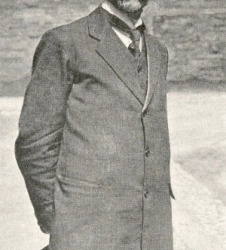
Eoin MacNeill
[Image description: A black and white picture of a tall man in a courtyard. He has a high forehead, wire frame glasses, and a shortly trimmed beard. He is standing with his hands behind his back holding a hat. He is wearing a white button down, a tie, a vest, and a suit jacket and grey pants.]
In response to the Ulster Volunteers, Eoin McNeill and Bulmer Hobson created the Irish Volunteers. Both men believed that the Irish wouldn’t stand a chance in an uprising against the British government and their best bet was to trust Redmond to pass Home Rule. The Irish Volunteers were created in order to defend their community from Unionist attacks. Things were tense in Ireland, but it seemed that parliamentary politics could save the day and the extremists would be pushed to the sidelines.
Then World War I began.
The British used the war to pass Home Rule but delay it taking affect for another three years. To add insult to injury, John Redmond encouraged young Irishmen to enlist in the British Army and fight for the Empire. McNeill and Hobson tried to convince its members to continue to trust Redmond, although they were angry that he was recruiting for the war. Yet, there was a handful of Irish Volunteers, who were also members of the resurrected IRB believed England’s difficulty, Irish opportunity.
They were Tom Clarke, Sean MacDiarmada, Padraig Pearse, Thomas MacDonagh, Eamonn Ceannt, and Joseph Plunkett. These men, plus James Connolly of the Irish Citizen Army, would sign the Proclamation of the Irish Republic and it would serve as their death warrant.
They knew they would not be able to win without arms and support, so, keeping their plans to themselves, they sent Roger Casement to Germany to present their plans for a German invasion that would coincide with an Irish rising. The Germans rejected this plan (maybe remembering what happened in 1798, when the French made a similar landing, weeks after a massive Irish uprising), but promised to send arms.
The Irish Volunteers were often seen drilling and practicing for some vague rebellion, so it wasn’t suspicious to the authorities or to MacNeil and Hobson to see units marching around. When Pearse issued orders for parade practice on April 23rd, Easter Sunday, MacNeil and Hobson took it at face value while those in the know, knew what it really meant. This surreal arrangement would not last for long and the committee’s secrecy nearly destroyed the very rising it was trying to inspire.
The first bit of trouble was Roger Casement’s arrest. The Germans were less than supportive of the uprising, and Casement boarded the ship Aud to return to Ireland to either stop or postpone the rising. However, when he arrived in Ireland on either April 21st or 22nd, he was pick up by British police and placed in jail.

Pearse Surrenders
[Image description: A faded black and white photo of three men standing on a street in Dublin. There are two man on the left and they are wearing the khaki cap and uniform of the British army. On the right is a man wearing a wide brim hat and a long black jacket]
Then MacNeil and Hobson had their worst suspicions confirmed-Pearse and his comrades were secretly planning a rebellion without their support. MacNeill vowed to do everything (except going to the authorities) to prevent the Rising and sent out a counter-order, canceling the drills scheduled for Sunday. This counter-order took an already confused situation and turned it into a bewildering disaster. Units formed as ordered by Pearse and dispersed with great puzzlement and some anger and frustration. Pearse and his comrades met to discuss their next steps and decided the die had been cast. There was no other choice except to try again tomorrow, Monday, 24th, April 1916.
Easter Rising was concentrated in Dublin with a few units causing trouble on the city’s outskirts. The Irish rebels fought from Monday to Friday, surrendering Friday morning. The leaders of the rising were murdered, but many future IRA leaders such as Eamon DeValera, Michael Collins, Richard Mulcahy, Constance Markievicz, Liam Lynch, and others survived. They were sent to several different prisons, the most famous being Frongoch where Collins was held. The IRB turned it into a revolutionary academy and practiced their organizing and resistance skills while formalizing connections and relationships. When they were released starting in December 1916, they were ready to take those skills back to Ireland.
Creation of the IRA and the Dail
Their approach was two pronged: winning elections and rebuilding the Irish Volunteers/ Irish Republican Brotherhood.
When the prisoners were released, the Irish population went from hating them for launching a useless rebellion to cheering their return. The English helped flame the revolutionary spirit in Ireland by proclaiming Easter Rising a “Sinn Fein” rebellion and arresting many Sinn Fein members who had nothing to do with the Rising. This made it clear Sinn Fein was the revolutionary party while John Redmond’s party was out of touch.
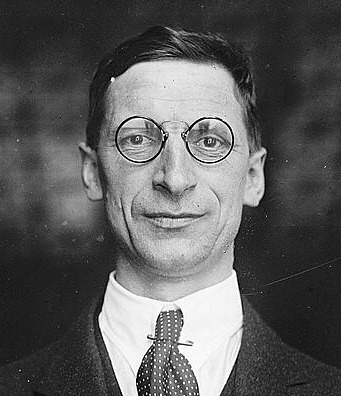
Eamon de Valera
[Image description: A black and white photo of a white man with a sharp nose and large, circular glasses. He has black hair and is wearing a white button down shirt, a polka dotted tie, and a grey suit.]
Sinn Fein ran several candidates such as Eamon DeValera, Michael Collins, and Thomas Ashe. Ashe would be arrested while campaigning and charged with sedition. While in jail, he went on hunger strike and was killed during a force feeding. Following an Irish tradition, Sinn Fein and the IRB turned Ashe’s funeral into a political lightning rod. They organized the funeral procession, the three-volley salute, and Collins spoke over Ashe’s grave: “There will be no oration. Nothing remains to be said, for the volley which has been fired is the only speech it is proper to make above the grave of a dead Fenian.”
On October 26th, 1917, Sinn Fein would hold their first national convention. During the convention, Eamon DeValera replaced Arthur Griffith as president and Sinn Fein dedicated itself to Irish independence with the promise that after independence was achieved the Irish people could elect its own form of government. However, there was still tension between those who believed in passive non-violence and the militant Sixteeners. 1917-1918 was spent building a bridge between parliamentary politics and militant politics of the 1920s, with Sinn Fein’s large young membership pushing it in a more militant direction.
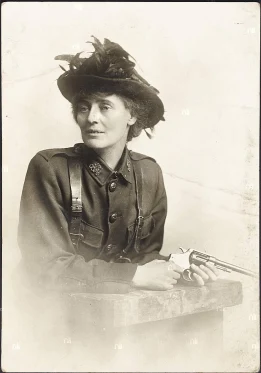
Constance Markievicz
[Image description: A sepia tone photo of a white woman looking to her right. She is leaning against a stool and holds a revolver. She wears a wide brim hat with black feathers and flowers. She has short hair. She is wear a military button down short and suspenders.]
Sinn Fein was also breaking social conventions, even though Cumann na mBan was still an auxiliary unit, Sinn Fein would allow four ladies on the Sinn Fein Executive and would run two women in the 1918 election-Constance Markievicz and Winifred Carney, with Markievicz becoming the first women to win a seat in parliament. Many of its supporters and campaigners were also women. In fact, many men would complain in 1917 and later that the women were more radical than the men. Cumann na mBan fully embraced the 1916 Proclamation and even had Hanna Sheehy-Skeffington deliver a message to President Wilson in 1918, asking him to recognize the Irish Republic. Cumann na mBan took the front line in the anti-recruitment campaign and the police boycott and the anti-conscription movement. Like the Volunteers, Cumann na mBan believed they were a military unit, although they never got arms for themselves and worked closely with Volunteer units and Sinn Fein clubs.
Irish Volunteers and IRB
While Sinn Fein was slowly rebuilding itself, the Irish Volunteers were also being resurrected from the ashes. It started with local initiatives led by men like Ernest Blythe, Eoin O’Duffy, and Sean Treacy. Units popped up in local communities, organized and armed by their local leaders and eventually contacting GHQ which consisted of men like Collins, Mulcahy, and Brugha. While local units were rebuilding themselves, Collins was using the IRB to form a strict corps of officers, a growing source of personal power as well as military power that men like Brugha and De Valera (who were IRB during Easter Rising, but renounced their membership after the rising failed) distrusted.
GHQ issued an order saying that units should only listen to orders coming from their own executive (in order to prevent the order-counter-order disaster that doomed Easter Rising) and swore the Volunteers would only be ordered into the field if commanders were confident of victory. No forlorn battles. Mulcahy, as Chief of Staff, worked hard to instill a military spirit and discipline into the Volunteers while understanding that their most effective unit at the moment was the company and local initiative. (The companies would expand into battalions and brigades as the war progressed, but the fighting and tactics would remain local and territorial) So, while trying to act like a regular army and expecting the Volunteers to respect their officers and GHQ, he also had to allow for local improvisation as well as trust the local executives to have control over their soldiers. It was a difficult balancing act he would struggle to maintain during the entire Anglo-Irish War and into the Irish Civil War and the formation of the Free Irish State.
The Irish Volunteers convention on October 26th, 1917, elected DeValera as president, Brugha as the chairman of the executive with Collins as director of organization and Mulcahy as director of training, Liam Lynch as Director of Communications, Staines, Director of Supply and Treasurer, O’Connor director of engineering.
All of this work could have been for nothing if the British hadn’t handed the IRA the greatest gift in the world: the 1918 conscription crisis.
Lightning Rod Issues
Food Shortage 1917-1918
Before conscription was the food shortages in the winter of 1917-1918. The shortage was created because of food being exported to Britain, invoking memories of the terrible famine. Sinn Fein could not stop all of the food being exported, but they did what they could to protest this newest version of starvation. For example, a member of Sinn Fein, Diarmund Lynch took thirty pigs meant to for exportation, killed them, and shared the food with hard hit families, earning him deportation to America, but becoming a local folk hero and increasing Sinn Fein’s prestige.
There were also agrarian tensions because grazers (those who used farmland for their cows to graze instead of growing crops) were given preference to available land so the Congested Districts Board could maximize profits. While this makes sense, it added to the great unease in the land, especially as the food shortage grew more acute.
The IPP grew out of the Land Wars of 1880s and Sinn Fein, ever aware of Irish history, decided it would be no different. It joined in the fight for land, arguing that all the ranch land should be broken up evenly. All over the country, Sinn Fein created commission to break up the land and figure out the pricing as well as organizing mass occupation of available land, but ranchers refused to acknowledge the prices Sinn Fein proposed.

1917 Electoral Victory March
[Image description: A black and white photo of several men and women marching together through a park with several tall green trees and a cobblestone wall. Leading the crowd are three men in long coats and wide brim hats playing bagpipes. Everyone else is wearing long coats, suit coats, or dresses and hats.]
The Irish Volunteers officially stayed out of the new land war, claiming it wasn’t military or political in nature, but local groups sometimes participated. This combined with Sinn Fein’s own land seizures could lead to painful confrontations with police and other anger Irish men, so it was a difficult job balancing non-violent and not starting a mass uprising.
Another tool Sinn Fein used was boycotting. Said to original in Ireland during the Land Wars and used to great affect by Charles Parnell, Sinn Fein boycotted the RIC. This was a serious threat to the British system, decreasing the pool of candidates it could recruit from for the RIC and training the people to view the RIC as “others,” the first step to making a population comfort with violent action.
Boycotting the RIC was an old idea, something Sinn Fein and the Irish Volunteers wanted to implement it as soon as they were released from prison. This became a strong tool of the Volunteers to ostracize those who were betraying the rebel cause by working for the British as well as prepare the citizens for a war mentality.
Conscription crisis
No one yet knew that World War I would be over by November 11th, 1918. British thought she was facing long years of further bitter sacrifices and they needed new blood. They looked at Ireland and its large set of unruly young men itching for a fight and introduced the Military Service bill, extending forced conscription to Ireland-giving the Volunteers a shot in the arm while also uniting the Irish political parties, for the first time ever.
The Sinn Fein, IPP, and the Catholic Church pledged to resist Britain’s efforts to conscript Irishmen. DeValera prepared a statement, meant for Woodrow Wilson, insisting that their resistance was a battle for self-determination and principles of civil liberty, similar to the American’s cause during America’s revolution. The Volunteers planned local actions as well, using the conscription crisis as a springboard for intensive recruiting and introducing the idea of militant resistance into the greater Irish consciousness. The boycott of the RIC increased tenfold during the anti-conscription movement, shocking the police and trapping them in their barracks in locations such as North Tipperary. Women were particularly effective implementers of the boycott. Eventually the boycott was expanded to include those who helped or associated with the police. The boycott didn’t force many police to resign, but it built a belligerent and hateful mindset against the police-allowing for later violence.

Anti-conscription Rally in Ballaghaderreen County
[Image description: A blur black and white photo of a large gathering of people. They are surrounding a wooden platform where as group of men stand. Above the platform there is a white banner that says: No conscription Stand United]
The Irish Volunteers were not as engaged with the conscription crisis as Sinn Fein, because they still didn’t have a doctrinal strategy in place. Instead, volunteers were told to avoid getting arrested and if the RIC tried to arrest them, to resist. The Volunteers held daily drills and parades and prepared for battle, should the order ever arrive. However, GHQ seemed more concerned with getting rifles and ammunition than ordering a massive uprising. Conscription allowed them to demand that the local area their units controlled give up their guns to the Irish Volunteers. Some Volunteers even bought rifles off RIC or local British soldiers. Lack of guns would be a problem that plagued the IRA through their war with the British. Conscription also saw a spike in people joining the Irish Volunteers. GHQ tried to manage this wave of volunteers by issuing orders regarding how men should be recruits and how they should be vouched for and accepted.
The Irish Volunteers allowed their own soldiers to elect their officers (how could this go wrong?) GHQ seemed to try and curb who could be elected like requiring that they be member of the IRB, but given the haphazard nature these units were created, but it was only somewhat successful, some units merging the Volunteers and IRB men seamlessly, while other companies were dominated by non-IRB men or vice versa.
They threatened mass slaughter should Britain try to enforce conscription and, apparently, there was a plan for Cathal Brugha to lead a group of men to assassin the British cabinet (relying on Collins and Mulcahy-who was now chief of staff-to recruit for this venture).
German Plot
The British back down on conscription in mid-May while also arresting 73 nationalist leaders from May 17-18 under the Defense of the Realm Act, including Eamon DeValera, Constance Markievicz, Arthur Griffith, and William Cosgrave. They claimed there was a German plot i.e., Sinn Fein was working with Germany-like the 1916 rebels did and the 1798 rebels with the French.
It quickly became clear how flimsy the excuse was, that there was scant information, and undermined the government’s credibility in Ireland. It successfully knocked Sinn Fein off its feet for a moment, especially since all nine of the twenty-one members of Sinn Fein’s Standing Committee were arrested, but the British failed to arrest some of the most dangerous rebels such as Collins, Brugha, Mulcahy, and Harry Boland. But in the long run, it boosted Sinn Fein’s cause and destroyed any chance IPP had of reclaiming the national narrative. As Constance Markievicz claimed, "sending you to jail is like pulling out all the loud stops on all the speeches you ever made…our arrests carry so much further than speeches.”
1918 Election
Sinn Fein had won a total of five elections between 1917 and 1918 (De Valera, Count Plunkett, Cosgrave, Patrick MacCartan, and Griffith) and lost two elections. 1918 was their first general election. The election was held on December 14th, 1918, and is considered one of the most important moments in modern Ireland’s history. It was the first election after the end of the First World War and, because of the Representation of the People Act, women over the age of 30 and working-class men over the age of 21 could vote, tripling the Irish electorate from 700,000 in 1910 to 1.93 million in 1918.
The IPP won only 6 seats, the Unionists took 26 seats, and Sinn Fein won 73 seats.
The Sinn Fein victory can be explained in three different ways:
The new electoral: women and working-class men: people who had been hardest hit by the war and the rising and the conscription crisis, as well as the good shortage in 1917.Not only was Sinn Fein and Irish Volunteers campaigning, but Cumann na mBan campaigned hard as well, possible driving people into the arms of Sinn Fein since Sinn Fein stood for a republic which was against everything as it currently was. iSinn Fein’s rivals: the IPP and Labour had been broken by WWI and needed to rebuild themselves and their reputations if they wanted to compete.
The clergy was on Sinn Fein’s side because of conscription. DeValera also went a long way to argue that anti-conscription was not anti-soldiers nor were they ignoring the sacrifice of the Irishmen who had fought in the war so far. But the crime was that Britain sacrificed the best Ireland had for a colonial war.
Curated candidates. Sinn Fein ran those it was confident would win and in seats that would not weaken its own position or risk schism with the Labor movement. Also, there was some election rigging and voter intimidation.
Instead of sitting in parliament, the Sinn Fein candidates would sit in a new parliament: the first Dail of Eireann.
The Dail
The First Dail was formed on January 21st, 1919. It held its first meeting in the Round Room of the Mansion house of Dublin and created a Declaration of Independence and the Dail Constitution. Only 27 minsters appeared because 34 were in jail or on secret missions. Sinn Fein invited the IPP and Unionists to participate but they refused. The declaration of independence ratified the Proclamation of the Republic of Easter Rising and outlined a socialist platform, but it was more of a propaganda message because there was only so much the Dail could realistically achieve while battling England.
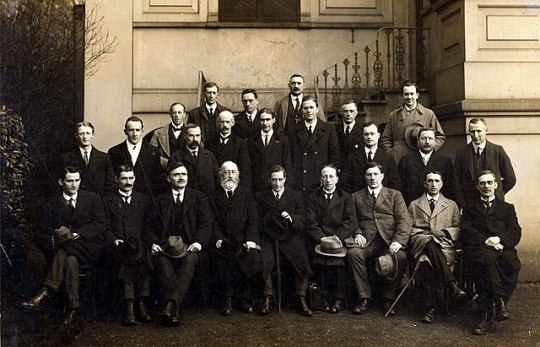
Members of the First Dail
[Image description: A black and white photo of three rows of men. The first row of men are sitting down on chairs, the second and third rows of men are standing. Most men are wearing black suits with white button down shirts and ties. Others are wearing tan or grey jackets. Some men had beards and mustaches, but most are clean shaven. Behind the men is a metal staircase and a white building.]
The constitution was a provisional document and created a ministry of the Dail Eireann. The ministry consisted of a President and five secretaries. First ministers of the Dail were:
Chairperson of the Dail: Cathal Brugha (because DeValera was in jail and Collins and Harry Boland were planning how to break him out)
Minister for Finance: Eoin MacNeill
Minister for Home Affairs: Michael Collins
Minister for Foreign Affairs: Count Plunkett
Minister for National Defense: Richard Mulcahy
The Dail expanded the number of ministers in April. It now included nine ministers within the cabinet and four outside the cabinet as well as a mechanism to create substitute presidents and ministers in the realistic event someone was arrested or killed.
This second ministry members were:
President: DeValera
Secretary for Home Affairs: Arthur Griffith
Secretary for Defense: Cathal Brugha
Secretary for Foreign Affairs: Count Plunkett
Secretary for Labour: Constance Markievicz
Secretary for Industries: Eoin MacNeill
Secretary for Finance: Michael Collins
Secretary for Local Government: W. T. CosgraveAustin Stacks would become minster after his release from jail and then took over as secretary for home affairs after Griffith became deputy president.
Once the Dail was convened, the Irish Volunteers saw themselves as an army of an Irish Republic hence why they named themselves the Irish Republican Army. They were formally renamed the IRA on August 20th, 1919, and took an oath of allegiance to the republic and to serve as a standing army.
On June 18th, 1919, the Dail officially established the Dail courts which were meant to replace the British judiciary. They eventually created several series of courts including a parish-based arbitration courts, district courts, and a supreme court which the people trusted more than the British courts. On June 19th, the Dail approved the First Dail Loan to raise funds they couldn’t raise via taxes. Collins would also create a bond scheme which helped keep the Dail and the IRA financially afloat.
England declared the Dail illegal in September 1919, but it was too little too late to undermine Ireland’s shadow government. DeValera left Ireland to fundraise in the United States, leaving Griffith as his Deputy President. The conduct of the Dail fell to its ministers while the conduct of the war fell to Collins, Mulcahy, Brugha, and the field commanders.
BRIEF Summary of Guerrilla Warfare in Ireland
The IRA would be broken into General Headquarters (GHQ) and local commanders. GHQ was run by Chief of Staff Richard Mulcahy who answered to Cathal Brugha, the Minister of Defense. Mulcahy also worked closely with Michael Collins, Minister of Finance and Intelligence and this amorphous command structure created a lot of tension amongst the three men. While Mulcahy tried to install discipline and standardization from GHQ, he was only partially successful as conditions on the ground often trumped whatever master plan GHQ had cooked up.

Richard Mulcahy
[Image description: A sepia toned photo of a thin white man with a prominent nose. He is wearing the military cap and uniform of the Irish National Army.]
It's estimated that the IRA had 15,000 members but only 3,000 were active at one time. The members were broken into three groups: unreliable, reliable, and active. Unreliable meant they were members in name only, reliable meant they played a supporting role, and active meant they were full-time fighters. It’s believed at least 1/5 of the active members were assistants and clerks. Skilled workers dominated the recruitment while farmers and agricultural workers were a minority. About 88% percent of the IRA members were under thirty and a majority of them were Catholics. The most active units were in Dublin County and Munster County which includes the cities of Clare, Cork, Kerry, Limerick, Tipperary, and Waterford.
The local units were supposed to be organized along the lines of a battalion but it was up to the local commanders, who were originally elected by their men. Initially, GHQ tried to assign two to three brigades to a county, but it would take a while before those brigades solidified. For the first year, the IRA could only muster small units, which actually worked in their favor.
Local commanders adopted the “flying columns” method of attack and GHQ eventually gave it their blessing. Flying columns consisted of a permanent roster of soldiers who worked together in small groups in coordinated attacks. The flying columns performed two kinds of attacks: auxiliary and independent
In an auxiliary attack, the flying column was assigned to a battalion as extra support for a large local operation already taking place. In an independent attack, the flying column itself would strike the enemy and retreat. This type of attack included harassing small military camps and police stations, pillaging enemy stories, interrupting communications, and eventually ambushes. The flying columns would become an elite and coveted unit but its soldiers were always on the run and relied on local support to survive.

Michael Collins
[Image description: A black and white photo of a white man shouting to a large crowd. He is standing outside on a platform, in the middle of a city street. He has short hair and is clean shaven. He is wearing a white shirt and a black suit.]
The IRA would go through two different reorganizations. The first occurred in March 1921. It broke up the brigade structure into small columns, built from experienced men. The brigade staff existed to provide supplier of arms, ammunition, and equipment while battalions provided the men for the columns. During the same reorganization, GHQ broke Ireland up into four different war zones to encourage activity in quieter areas.
In late 1921, the IRA was organized a second time. This time, GHQ created divisions. Division commanders were responsible for large swaths of territory, similar to the war zones created earlier that year. The purpose of the divisional commanders was to increase the likelihood of brigade and battalion coordination, make the IRA feel like it was growing into a real army, but still allowed (and encouraged) independent command, and transplant some of the administrative burden from GHQ to the divisional commanders. This was especially important if something were to happen to GHQ.
You can listen to season 1 to learn about specific battles. For the purpose of this recap, all you really need to know is that the IRA went from singular ambushes lead by ambitious local commanders to coordinated ambushes, assassinations (the most famous being Bloody Sunday carried out by Collins’ personal assassins), prison riots, hunger strikes, and outright assaults on barracks in the rural areas of Ireland. In addition to these military developments, the Dail supported the war effort by retaining the people’s support and maintaining the functionality of the Dail Courts and the Dail Loans.
The British responded by implementing martial law, launching large scale searches and arrests, curfews, roadblocks, and interment on suspicion and by creating the Black and Tans and the Auxiliaries. The Black and Tans arrived in Ireland on March 25th, 1920. They were meant to reinforce the RIC and recruited mostly British veterans. They were called black and tans because of their uniform (dark green which appeared black and khaki. They weren’t special forces, just normal reinforcements which may explain why they were known for their brutality and violence. The auxiliaries were founded in July 1920s as a paramilitary unit of the RICs. It consisted of British officers and were meant to serve as a mobile strike and raiding force. 2,300 men served during the war and they were deployed in the southern and western regions of Ireland – where fighting was the heaviest. They were absolute brutes, known for arson and cruelty.
The British wanted to subdue Ireland by the May 1921 election, so they sent over fifty-one battalions of infantry, however, confusion over the military’s role, the RIC’s role, an inability to coordinate amongst the army, RIC, Black and Tans, and Auxiliaries, and the implementation of martial law hurt British efforts.
The IRA were feeling the pressure. In early 1921, they suffered some of their most drastic defeats contributing to poor morale and disgruntlement with the Dail and GHQ. GHQ was losing control over local forces while also trying to maintain a guerrilla war on a shoestring budget. To make matters worse, DeValera returned from America in December 1920 and spent most of 1921 trying to reorganize the IRA and Dail according to his vision. His arrival exasperated already existing tensions amongst several ministers, including Collins, Mulcahy, and Brugha, and threatened to tear the IRA apart from the inside.
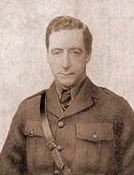
Cathal Brugha
[Image description: A sepia toned photo of a small and thin man in a military uniform and a white button down and stripped tie. He has short hair and is clean shaven. Behind him is a blank white wall.]
Despite all of this, by May 1921, the IRA had reached its peak and the crown forces suffered record losses. From the beginning of 1921 to July, the IRA killed 94 British soldiers and 223 police officers. This was nearly double the totals from the last six months of 1920. This was also when the IRA launched their most ambitious attacks such as their attack on the Shell factory which amounted to 88,000 pounds in damage and their assault on the Dublin Custom House destroying the inland revenue, stamp office, and stationery office records. In addition to these attacks, the IRA increased the number and sophistication of their attacks in what is now Northern Ireland. However, these attacks could be self-defeating as they only enraged the Ulster Volunteers and left the Catholic population at the mercy of angry Unionists. These attacks would convince the British that Ireland was already partitioned (even if Sinn Fein and the IRA refused to acknowledge the fact) and it was in their interest to protect Northern Ireland from IRA incursions. This meant another army and more money that could have been spent elsewhere.
It was clear that neither side could win this conflict through military efforts alone.
References:
The Republic: The Fight for Irish Independence by Charles Townshend, 2014, Penguin Group
Fatal Path: British Government and Irish Revolution 1910-1922by Ronan Fanning, 2013, Faber & Faber
Richard Mulcahy: From the Politics of War to the Politics of Peace, 1913-1924 by Padraig O Caoimh, 2018, Irish Academic Press
A Nation and Not a Rabble: the Irish Revolution 1913-1923by Diarmaid Ferriter, 2015, Profile Books
Eamon DeValera by Ronan Fanning, 2016, Harvard University Press
#Irish War of Independence#Irish History#Michael Collins#Richard Mulcahy#Irish Republican Army#IRA#Eamon Devalera#Cathal Brugha#Constance Markievcz#easter rising#history blog#queer historian#podcast episode#Spotify
10 notes
·
View notes
Text
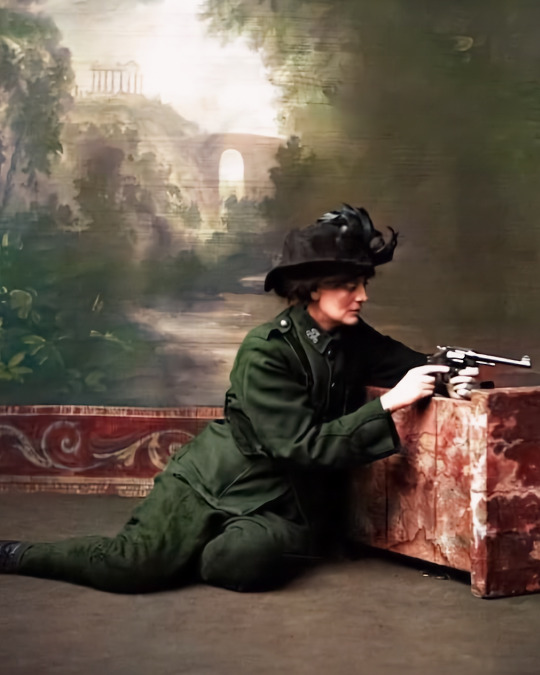



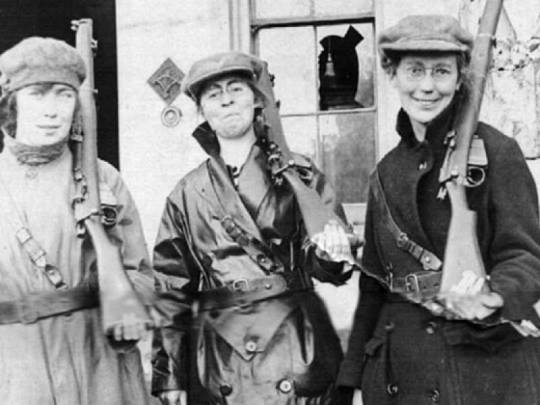

Easter Rising, 1916
19 notes
·
View notes
Text
#OTD in 1882 – Birth of republican activist, Joe Clarke, in Dublin.
Born in Rush, Dublin, Clarke worked for the Sinn Féin Bank, and was active in the Easter Rising. Located in the vicinity of Northumberland Road and Mount Street Bridge, he took part in some of the fiercest fighting of the week, in an area where the Sherwood Foresters famously marched into a waiting party of Volunteers, who had taken up strategic positions in the hope of ambushing men marching…

View On WordPress
#Éamon De Valera#Éamonn MacThomáis#Brian O’Higgins#Comhairle na Poblachta#Dublin#Easter Rising#Elizabeth O&039;Farrell#Frongoch Internment Camp#Irish Republican#Joe Clarke#Liverpool Prison#Michael Collins#Mount Street bridge#National Graves Association#Northumberland Road#Rush#Sinn Fein#Wakefield Prison
4 notes
·
View notes
Text
Easter Rising

1916 – Easter Rising: Irish rebels, led by Patrick Pearse and James Connolly, launch an uprising in Dublin against British rule and proclaim an Irish Republic.
#Apr.24.1916#Easter Rising#Patrick Pearse#Óglaigh na hÉireann#IRB#James Connolly#The Irish Citizen Army#Proclamation of the Irish Republic#history today
7 notes
·
View notes
Text

Cad atá á dhéanamh agat, a Tumblr?
No Tumblr, no.
#it's when the irish fired chocolate easter eggs at the sherwood foresters from the gpo and that was mistaken as an uprising#obviously#history humour#20th century#easter rising#ireland#irish history#stair#gaeilge#r learns gaeilge
6 notes
·
View notes
Text
My mum: So he was this great irish hero who went down in history for-
Me: fighting the british?
My mum: fighting the british!
#ireland#irish#irish history#caramelfantic#colonisation#british empire#1916#easter rising#war of independence#oliver cromwell
6 notes
·
View notes
Photo
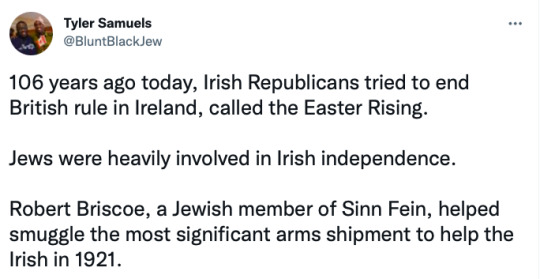

28 notes
·
View notes
Text

The last St Patrick’s Day greeting from James Connolly, written by him on March 18th 1916. A month later the 1916 Rising took place and in just under two months he would be shot by firing squad.
THE LAST SAINT PATRICK'S DAY GREETINGS FROM JAMES CONNOLLY
“The question often arises: Why do Irishmen celebrate the festival of their national saint, in view of the recently re-discovered truth that he was by no means the first missionary to preach Christianity to the people of Ireland? It is known now beyond the shadow of a doubt that the Christian religion had been preached and practised in Ireland long before St. Patrick, that Christian churches had been established, and it is probable that the legend about the shamrock was invented in some later generation than that of the saint. Certainly the shamrock bears no place of any importance in early Celtic literature, and the first time we read of it as having any reference to or bearing on religion in Ireland occurs in the work of a foreigner – an English monk.
But all that notwithstanding there is good reason why Irish men and women should celebrate St. Patrick’s Day. They should celebrate it for the same reason as they should honour the green flag of Ireland, despite the fact that there is no historical proof that the Irish, in the days of Ireland’s freedom from foreign rule, ever had a green flag as a national standard, or indeed ever had a national flag at all.
The claim of the 17th of March to be Ireland’s national festival, the claim of St. Patrick to be Ireland’s national saint, the claim of the shamrock to be Ireland’s national plant, the claim of the green flag to be Ireland’s national flag rests not on the musty pages of half-forgotten history but on the affections and will of the Irish people.
Sentiment it may be. But the man or woman who scoffs at sentiment is a fool. We on this paper respect facts, and have a holy hatred of all movements and causes not built upon truth. But sentiment is often greater than facts, because it is an idealised expression of fact – a mind picture of truth as it is seen by the soul, unhampered by the grosser dirt of the world and the flesh.
The Irish people, denied comfort in the present, seek solace in the past of their country; the Irish mind, unable because of the serfdom or bondage of the Irish race to give body and material existence to its noblest thoughts, creates an emblem to typify that spiritual conception for which the Irish race laboured in vain. If that spiritual conception of religion, of freedom, of nationality exists or existed nowhere save in the Irish mind, it is nevertheless as much a great historical reality as if it were embodied in a statute book, or had a material existence vouched for by all the pages of history.
It is not the will of the majority which ultimately prevails; that which ultimately prevails is the ideal of the noblest of each generation. Happy indeed that race and generation in which the ideal of the noblest and the will of the majority unite.
In this hour of her trial Ireland cannot afford to sacrifice any one of the things the world has accepted as peculiarly Irish. She must hold to her highest thoughts, and cleave to her noblest sentiments. Her sons and daughters must hold life itself as of little value when weighed against the preservation of even the least important work of her separate individuality as a nation.
Therefore we honour St. Patrick’s Day (and its allied legend of the shamrock) because in it we see the spiritual conception of the separate identity of the Irish race – an ideal of unity in diversity, of diversity not conflicting with unity.
Magnificent must have been the intellect that conceived such a thought; great must have been the genius of the people that received such a conception and made it their own.
On this Festival then our prayer is: Honour to St. Patrick the Irish Apostle, and Freedom to his people.
- James Connolly, "The National Festival", "The Workers'Republic ", March 18, 1916.
2 notes
·
View notes
Text

Is this that "self care" people talk about?
#lakeside#easter rising#all souls#reading#idr the last time i had actual time to read outside#also its beautiful outside#not pictured is the dog im watching (Mr. V) lying in front of me
2 notes
·
View notes
Text
Queer erasure in Irish History

At the end of the 1916 Easter Rising, the only participants left in the GPO Garrison were the rebel leaders, Elizabeth O’Farrell and her life-long partner, Julia Grenan. The leaders chose O’Farrell to go alone into the battlefield to deliver the surrender to the British HQ, with only a white flag as protection.
A photographer captured the iconic moment of Padraic Pearse and Elizabeth O’Farrell handing over the surrender to the British HQ and an English tabloid published the photo of the surrender. O’Farrell is absent from this published image despite being visible in the original photo. So the tabloid quite literally airbrushed Elizabeth O’Farrell out of history.
This is just one example of a queer person being erased from our history. As iconic as this image is today, the fact that O’Farrell was a lesbian, and Pearse was probably queer, is rarely mentioned. The queerness of these two Irish heroes was airbrushed out of history. But that’s why we have Queer History tours (and blogs) to help solve this problem! Now we can reflect on our story and paint these important figures back into our history.
#lgbtq history#dublin history#queer history#Elizabeth O’Farrell#Julia Grenan#Padraic Pearse#queer erasure#Easter Rising
11 notes
·
View notes
Text
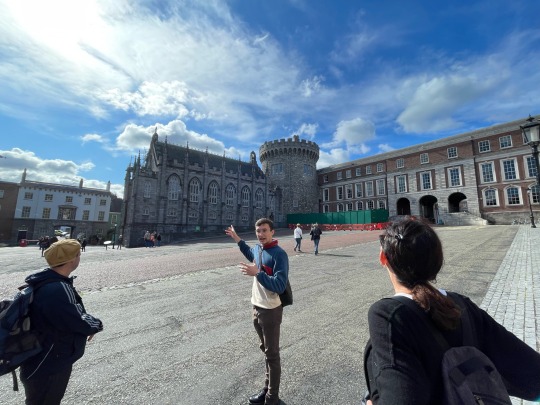
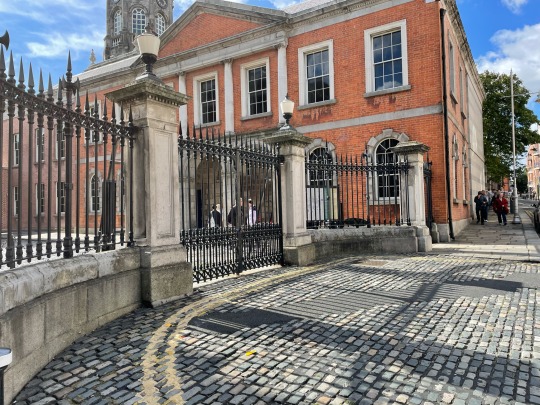


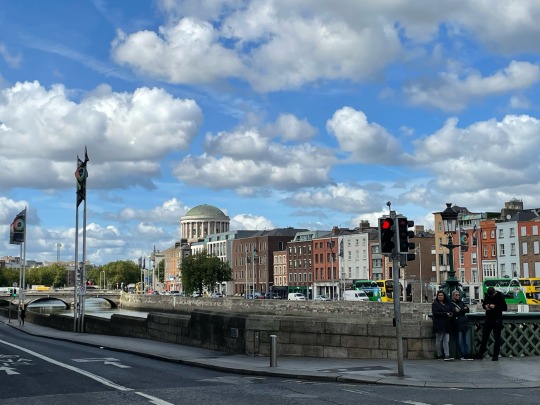
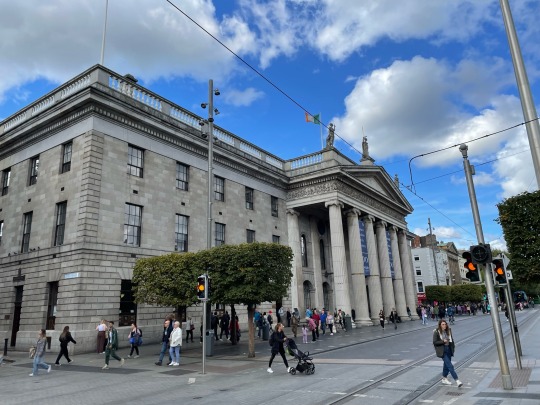
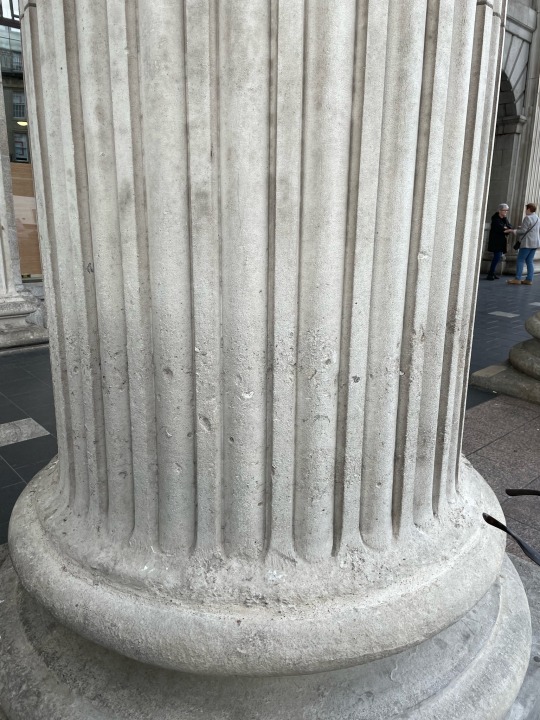
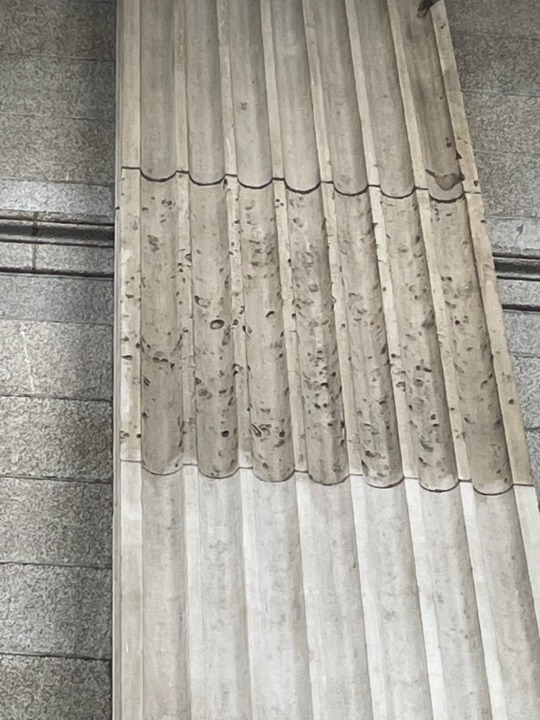


Today I closed out my visit to Ireland with a tour I have long anticipated: a walking tour of the 1916 Easter Uprising.
It’s no exaggeration to say that this event is when modern Ireland was born. The Easter Rising lasted only five days and ended in failure, but it’s effects were far reaching. In fact, all the rebel leaders knew it would end in defeat, but they chose to do so anyway in the hopes of sending a message to both the British who put them down and to Irishmen nationwide.
Irishmen hold men like Padraig Pearse and James Connolly as we Americans view George Washington or Thomas Jefferson. Standing where the proclamation of an Irish Republic was read out is no different from standing in Independence Hall or on the fields of Gettysburg.
The story of the Easter Rising is one of heroism, tragedy, and patriotism. A story of a nation striking out for freedom. A story of men who laid down everything for a cause, a cause that would eventually be realized in the eventual independence of Ireland.
And it’s a story that I intend to tell in a future novel. ;)
With this, my time in Ireland comes to an end, but I won’t be coming home just yet. I’ll be making a stop in Iceland for one day to see all it has and finally returning home.
Pictured: Dublin Castle, Cork Hill gate, Four Courts seen from Gratton Bridge, and the General Post Office (GPO).
#historyman's musing#ireland#vacation photos#photos#dublin#easter rising#1916 rebellion#Easter rebellion#1916#irish history#20th century history
3 notes
·
View notes
Text
#OTD in 1916 – Easter Rising Dublin | Day 4.
#OTD in 1916 – Easter Rising Dublin | Day 4.
It is the fourth day of the Easter Rising and the remaining rebels are under constant attack. The GPO and Four Courts are being blitzed with machine gun and rifle fire, and large parts of Sackville Street (O’Connell Street) are up in flames.
As British authorities come to terms with the situation in Dublin, fierce street to street fighting takes place in parts of Dublin. James Connolly is…
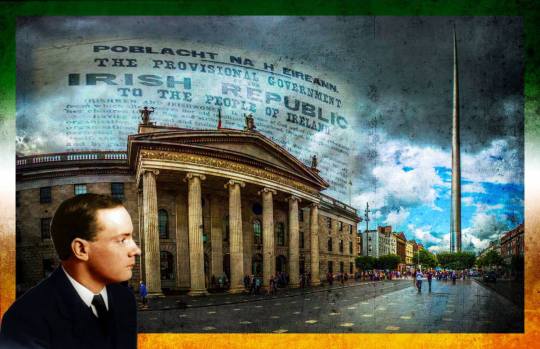
View On WordPress
#16th Irish Division#1916 Easter Rising#Battle of Hulluch#British Army#British Rule#Capel Street#Cathal Brugha#Day Four#Dublin#Eamonn Ceannt#Easter Rising#Germany#GPO#Home Rule#Ireland#Irish Volunteers#James Connolly#John Redmond#Mount Street bridge#O&039;Connell Street#Sackville Street#South Dublin Union#WWI
11 notes
·
View notes